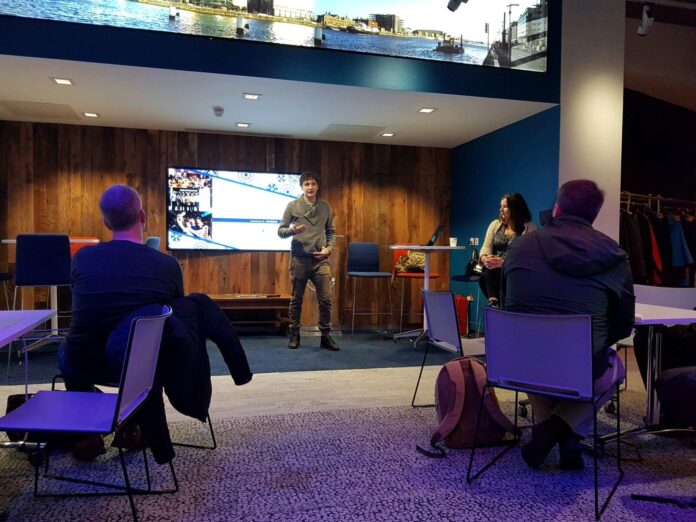The first meetup for hashgraph enthusiasts in Dublin happened last night in the Bank of Ireland Workbench in Montrose. Ably fortified by pizza and coffee, approximately 20 people showed up to listen to Conor O’Higgins, content manager in Ireland for hashgraph.
A show of hands at the start showed the audience was already aware of the technology with over half hailing from an engineering background. There were some cryptocurrency traders attending as well.
Conor stepped through the interesting aspects of the technology, talking though the consensus algorithms, Byzantine Emperors and the gossip about gossip protocols. For more information on the technology visit this article. (November 29).
Questions from the meetup concentrated on how hashgraph charged per transactions – looking at the mining approach from Blockchain. O’Higgins pointed out that currently, hashgraph is only deployed in private, permissioned-based networks.
‘Real use examples included CULedger,’ he explained, ‘which is a credit union consortium supported by the efforts of the Credit Union National Association (CUNA) and the Mountain West Credit Union Association (MWCUA).’
Other engineers present were familiar with the Credit Unions example. ‘It’s a situation where individual Credit Unions don’t know or trust each other but they need to transact,’ said one engineer. ‘Hashgraph offers the speed and the security to a largely untrustful community.’
Speed was also a factor for the audience. Another participant, working the FinTech area, said he despaired of blockchain as it was just too slow. He wanted to know if hashgraph could offer an alternative. O’Higgins replied that was one of the key points of the new technology.
Other concerns raised about the current blockchain mining approach, and the concentration of powerful mining corporations in China, were discussed. Would this lead to a semi centralised centre of control or a silo of data just like traditional databases?
It was agreed that hashgraph has the potential to work outside these limiting parameters. ‘The energy costs are minimal based on the tiny size of data exchanged and the graph replacing an ever longer blockchain,’ said O’Higgins. ‘And voting only needs to be a question of polling who knows what and when – again speeding up the process.’
Questions continued until the closure of the meeting promptly at 8pm with the participants keen to come together again.
















